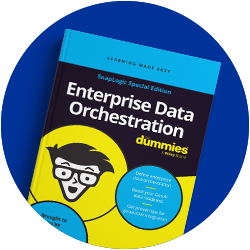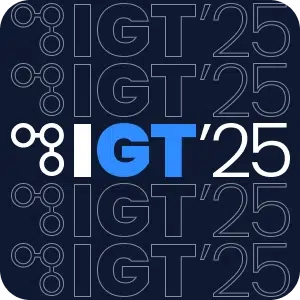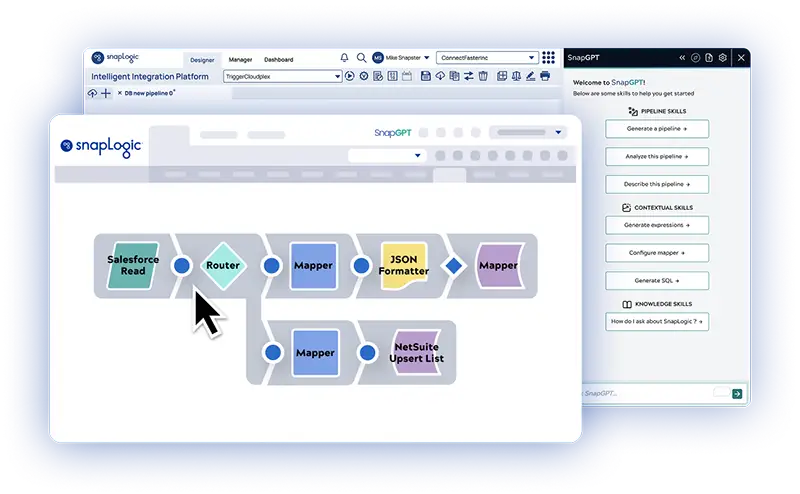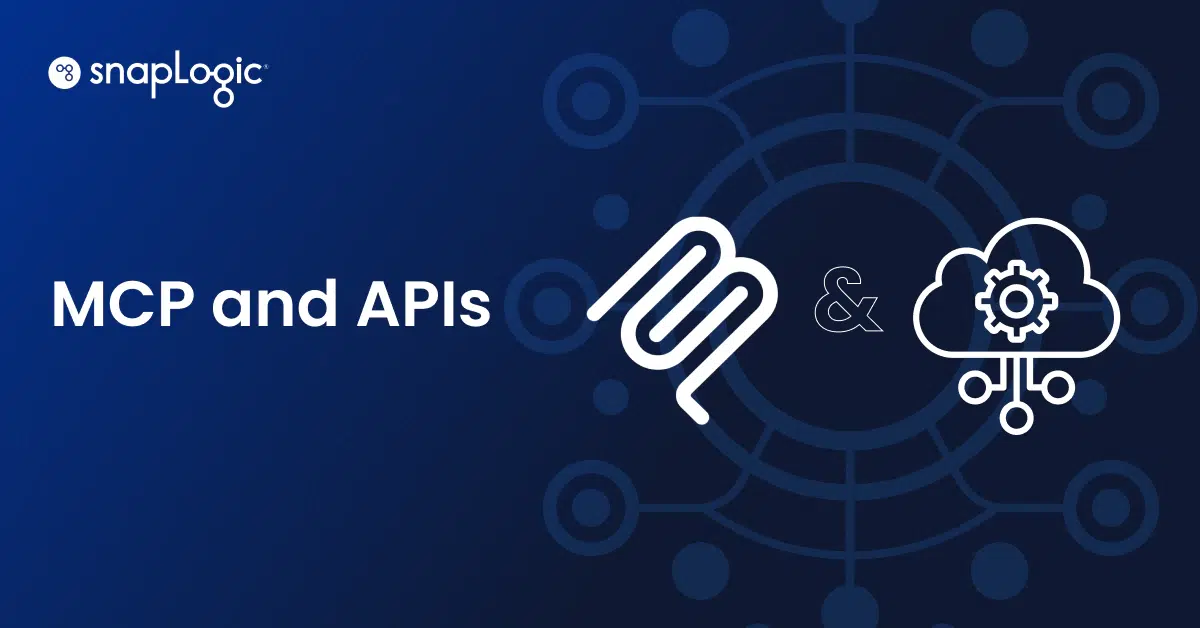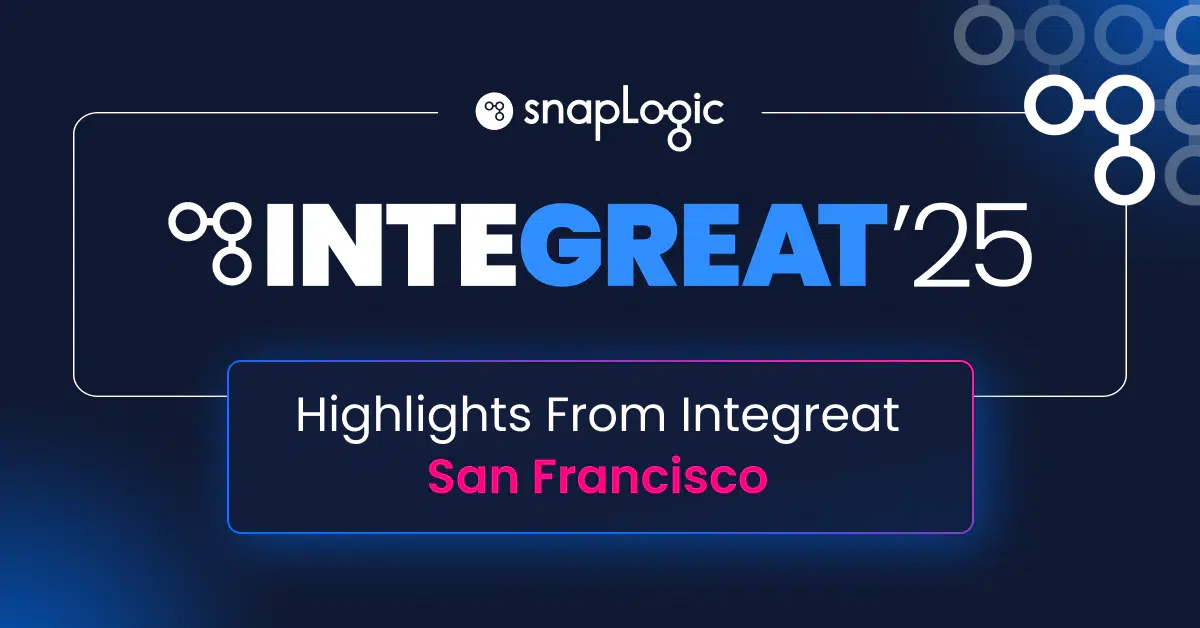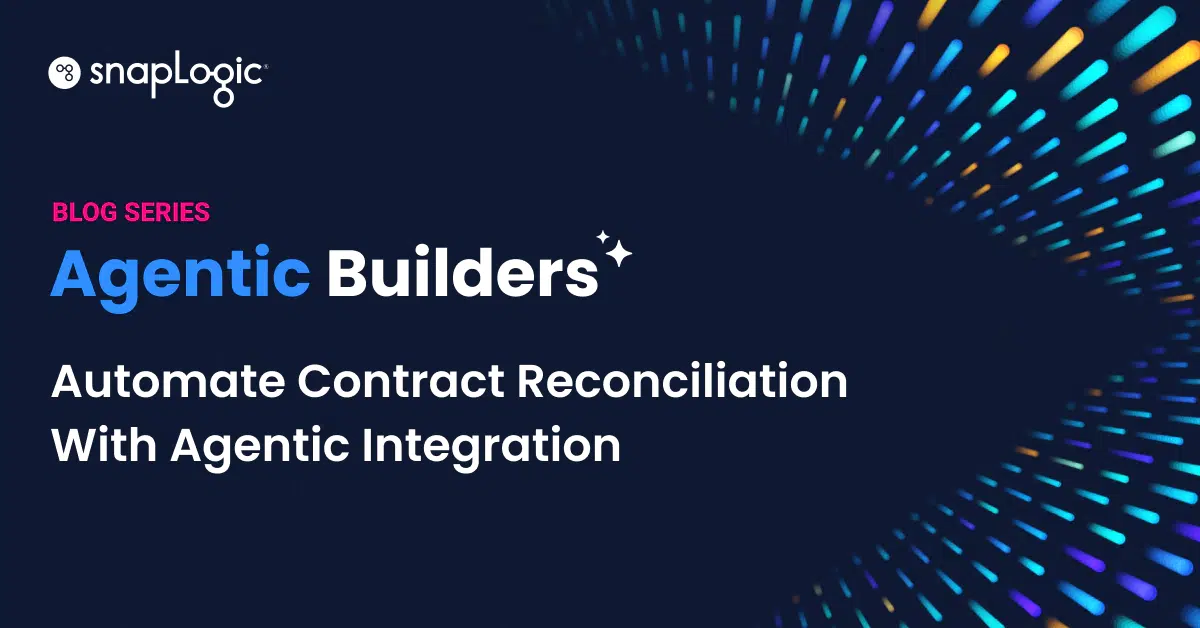TL;DR
- Why workflow automation matters: Faster delivery, fewer handoffs, less rework across GTM, finance, HR, IT
- What “workflow automation platform” means: Orchestrates multi-step processes across systems with triggers/events, transforms, error handling, RBAC/audit logs, and environment promotion; not just single-app macros
- How to evaluate: coverage; depth (real-time triggers, bulk ops, APIs/webhooks, human-in-the-loop); governance; security; scale/reliability; data handling; extensibility; TCO; ecosystem
- Who’s in the market: Leading iPaaS/automation vendors with maintained connector catalogs (e.g., SnapLogic; others listed alphabetically below)
- How to choose quickly: Map top 10 apps → run a 1-day POC (10k records or 200 events + one forced error) → validate governance, security, performance, and cost.
Why workflow automation, why now
The problem (mid-market reality)
Workflow automation for mid-size companies means governed, cross-system integrations powered by pre-built connectors, real-time events, and AI-assisted steps, so teams ship faster with less risk and better compliance. Mid-size companies struggle with complex enterprise systems (CRM, ERP, HRIS, ITSM, data cloud) due to lean teams.
This results in manual processes, inefficient data handoffs, and fragile scripts, hindering critical operations like onboarding, revenue management, financial close, and renewals. These manual methods lack auditability and scalability, creating growth bottlenecks.
What modern platforms do (beyond macros)
Workflow automation platforms (iPaaS/automation) orchestrate multi-step, cross-system processes with:
- Pre-built connectors to systems (auth, schema, rate limits, retries)
- Real-time triggers & webhooks and human-in-the-loop steps
- Transformations and data validation across apps and the warehouse
- Governance (RBAC, audit logs, promotion dev → test → prod)
- Security (SSO, secrets vault, encryption) and operational visibility (logs/metrics/traces, status pages)
- AI assistance/agentic steps to draft mappings, classify events, or propose actions under guardrails
Why now (what to expect)
Implementing such automation significantly improves mid-size companies’ operations. Workflows that took weeks can now be completed in days, and maintenance risks are reduced. Compliance is enhanced with traceable approvals and audit-ready logs, and operations become more scalable.
This translates to faster time-to-revenue, cleaner financial closes, and smoother employee lifecycle management. Essentially, workflow automation for mid-size companies provides governed, cross-system integrations with advanced features, leading to faster delivery, reduced risk, and better compliance.
What counts as a “workflow automation tool” (and what doesn’t)
A workflow automation platform is a secure, governed tool that uses pre-built connectors, triggers, and transformations to run multi-step, cross-system processes. It includes optional AI assistance and human approvals, along with observability features.
Automations that are considered out of scope or only partially relevant include single-app automations like Gmail rules or spreadsheet scripts, one-off scripts/cron jobs lacking RBAC, audit, or promotion paths, and point-to-point connectors without error handling, versioning, or observability. Pure RPA, which primarily relies on clicking UIs without API-level governance, is also generally excluded, though it can serve as a complement rather than a replacement.
Boundary cases like domain applications with built-in automations, such as CRM workflow rules, are only counted if they can orchestrate external systems with proper governance and observability. Similarly, event buses or “iPaaS lite” tools are included if they offer connectors, mappings, RBAC/audit, and promotion capabilities, rather than just transport functionality.
Evaluation checklist
Choosing the right integration platform isn’t just about flashy demos. It’s about depth, reliability, and long-term fit. This evaluation checklist helps you go beyond surface-level comparisons to assess real-world performance, governance, security, and scalability.
Use it to validate vendor claims, uncover hidden costs, and ensure your chosen solution can handle today’s needs and tomorrow’s growth.
- Coverage: native connectors for your top 10 apps (CRM, ERP/Finance, HRIS, ITSM, support, data cloud)
- Check: Official catalog lists CRUD bulk/events for each target system
- Check: Official catalog lists CRUD bulk/events for each target system
- Depth: real-time triggers/webhooks, polling where needed, robust API ops (search, upsert/merge), approval tasks
- Check: Supports webhook replay and idempotent updates
- Check: Supports webhook replay and idempotent updates
- Ease of build and maintenance: visual mapping, reusable assets, AI assist/copilots, sandbox/test modes, change previews
- Check: Promote designs between environments without rework
- Check: Promote designs between environments without rework
- Governance: fine-grained RBAC, audit trails, policy guardrails, approvals, environment promotion (dev → test → prod), artifact/version control
- Check: Role separation for builders/operators; exportable audit logs
- Check: Role separation for builders/operators; exportable audit logs
- Security: SSO, secrets vault (rotation), encryption in transit/at rest, network isolation/private links; relevant attestations (e.g., SOC 1/2/3; HIPAA where applicable), GDPR/CCPA commitments
- Check: Vendor security docs and current certificates
- Check: Vendor security docs and current certificates
- Scale and reliability (enterprise-scale): parallelism, horizontal scaling, retries/backoff, DLQ, circuit breakers, resumability; documented latency/throughput SLOs
- Check: Handles 10k records/200 events with a forced error (rate-limit or schema drift) and clean recovery
- Check: Handles 10k records/200 events with a forced error (rate-limit or schema drift) and clean recovery
- Data handling: transformations, validation, PII masking/redaction, schema evolution/drift detection; warehouse/ELT friendliness
- Check: Pre/post-SQL or equivalent hooks; safe deploys
- Check: Pre/post-SQL or equivalent hooks; safe deploys
- Observability: run history, logs/metrics/traces, correlation IDs; export to SIEM/APM; live status/uptime page
- Check: Alerting on failures/latency; incident transparency
- Check: Alerting on failures/latency; incident transparency
- Extensibility: custom connector SDK, CLI/APIs, Python/JS steps, queue/event-bus integrations, agent/MCP support
- Check: Can implement one long-tail integration without vendor PS
- Check: Can implement one long-tail integration without vendor PS
- Total cost of ownership (12-Month): licensing and usage tiers, connector/runtime add-ons, infrastructure costs (if any), admin/ops effort, expected PS
- Check: Cost model at projected volumes with growth headroom
The shortlist
After narrowing down your options, it’s time to look closely at the leading contenders. Each of these platforms brings its own strengths in deployment flexibility, integration depth, usability, and AI-readiness. Here’s a snapshot of how top solutions stack up, so you can choose the right fit for your organization’s scale, complexity, and automation goals.
SnapLogic
- Deployment style: Cloud iPaaS with elastic execution; on-prem/private connectivity supported
- Integration style: Unified apps + data workflows (APIs, events, ETL/ELT) via reusable Snaps
- Ease of use: Visual designer for IT and business builders; promotion and strong observability
- AI/automation focus: AI-assisted pipeline authoring; agent-ready workflows
Boomi
- Deployment style: Cloud iPaaS with on-prem runners/agents
- Integration style: App-to-app workflows, APIs, EDI support
- Ease of use: Visual canvas; broad template library
- AI/automation focus: Emerging assistants/templates
Microsoft Power Automate
- Deployment style: Microsoft 365/Dynamics cloud services
- Integration style: M365/Teams/Dynamics automations; connectors + APIs
- Ease of use: Approachable builder; best in Microsoft estates
- AI/automation focus: Copilots and Power Platform AI
ServiceNow
- Deployment style: SaaS (ITSM/ESM) with automation/orchestration
- Integration style: Request/approval catalogs, IT workflows, integrations
- Ease of use: Strong ITSM patterns; governed processes
- AI/automation focus: Expanding AI across IT workflows
Workato
- Deployment style: SaaS automation/iPaaS
- Integration style: Cross-app “recipes,” API/event orchestration
- Ease of use: Business-friendly builder; large recipe library
- AI/automation focus: Embedded copilots and AI steps
Comparison: workflow automation platforms
To make an informed choice, it helps to see how leading workflow automation platforms compare across core capabilities. This table highlights each vendor’s connector coverage, real-time visibility, ecosystem scope, and typical market focus, giving you a clear snapshot of where they excel and which environments they serve best.
| Vendor | Connectors (official) | Real-time visibility | Ecosystem (high-level) | Market focus |
| SnapLogic | Connector catalog (Snaps) | Status/trust page | iPaaS for apps and data; reusable Snaps | Mid-market → enterprise |
| Boomi | Connector catalog | Status page | Cloud iPaaS; SaaS/DB/EDI | Mid-market → enterprise |
| Microsoft Power Automate | Connector list | Azure/M365 status | Microsoft-native automations | Microsoft-first estates |
| ServiceNow | Integration hub/docs | Trust/status | ITSM/ESM workflows | IT-led programs |
| Workato | Connector/recipe library | Status page | Business automation + APIs/events | Mid-market → enterprise |
High-impact mid-market use cases
For mid-market organizations, the fastest wins come from automating the workflows that touch revenue, people, and finance every day. These high-impact use cases don’t just save hours. They improve accuracy, visibility, and agility across teams. Here’s how to tackle five proven integration patterns, complete with recommended Snaps, step-by-step reference flows, and opportunities to layer in AI for even greater efficiency.
1) Revenue operations: Lead → Opportunity → Billing
What to automate: Form/ad → enrichment → MQL routing → Opp create → Quote/Billing → Attribution write-back
Recommended Snaps: Salesforce, HubSpot/Marketo, Stripe/Chargebee, warehouse connector(s)
Reference integration flow (step-by-step):
- Capture lead in HubSpot/Marketo → enrich/score
- Upsert Lead/Contact and Opportunity in Salesforce
- Create Quote/Invoice in billing/ERP
- Write attribution back to warehouse; handle errors via DLQ/retry
2) Employee lifecycle (Joiner-Mover-Leaver)
What to automate: HRIS hire → identity provisioning → equipment/license tickets → revocations
Recommended Snaps: Workday/BambooHR, Azure AD/AD, ServiceNow/Jira, Google/M365
Reference integration flow (step-by-step):
- Workday hire event → create user + groups in Azure AD/AD
- Open ServiceNow tasks (laptop, SaaS licenses); optional Jira issue
- Scheduled audits; auto-revoke on termination or role change
3) Finance close and order-to-cash
What to automate: Orders → invoices → payments → GL postings → exceptions → close dashboards
Recommended Snaps: NetSuite/SAP/Workday Financials, Stripe/Adyen, warehouse
Reference integration flow (step-by-step):
- Sync orders from CRM/commerce → ERP invoices
- Update payment status; post to GL
- Reconcile exceptions (DLQ + alerts); publish close KPIs to warehouse
4) Customer support → product/engineering loop
What to automate: Ticket triage → bug creation → status sync → CSAT/deflection analytics
Recommended Snaps: Zendesk/ServiceNow, Jira, Slack/Teams, warehouse
Reference integration flow (step-by-step):
- New ticket → categorize/priority tag
- Create/update Jira issue; keep status in sync
- Push summaries to Slack/Teams; log outcomes to warehouse
5) AI-assisted (agentic) workflows
What to automate: Trigger → retrieve context → LLM/agent step → human review → system update
Recommended Snaps: LLM connector(s), warehouse/KB, target app connectors
Reference integration flow (step-by-step):
- Trigger/event with scope → retrieve context from warehouse/KB
- Execute LLM/agent step; propose action
- Human-in-the-loop approval → commit change via connector; log/audit
RFP/POC checklist
When you’re down to a shortlist of platforms, an RFP or POC is your chance to separate marketing claims from real-world performance. Use this checklist to dig into what truly matters, from security and reliability to build speed and extensibility. and ensure your chosen platform can scale with both your data and your team.
- Connectors: Native coverage for your top 10 apps + API version pinning
- Security: SSO, RBAC, secrets vault, tenant isolation; relevant attestations
- Reliability: Retries/backoff, DLQ, alerting, SLAs
- Build speed: AI assist, mapping UI, test/sandbox, promotion
- Data: Bulk & incremental, schema evolution, PII handling, warehouse friendliness
- Extensibility: Custom connector SDK, CLI, Python/JS
- Ops: Logs/metrics/traces export (SIEM/APM), cost controls, usage transparency
- People: Role-based workspaces for business builders vs. IT guardrails
How to choose in 1 day
When time and resources are tight, evaluating integration platforms can’t drag on for weeks. The good news: with a focused, evidence-based approach, you can identify the right fit in just one day. Follow this rapid assessment framework to move from inventory to proof-of-concept, and make a confident, data-driven choice without sacrificing rigor.
- Inventory: List the 10 systems and 5 workflows that hurt most (volumes, SLOs, owners)
- Shortlist: Pick 3 tools with native connectors for those systems
- POC: Authenticate; move 10k records or run 200 events; force one error (rate limit or schema drift); verify logs/alerts and resumability
- Governance and security: Test RBAC, promotion (dev → test → prod), audit trails, redaction, and SSO/secret handling
- TCO: Model 12-month cost at projected volumes; decide single-platform vs. dual-track (e.g., iPaaS + ELT)
FAQs
No. RPA emulates UI actions; workflow automation orchestrates APIs/events with governance and scale. Many orgs use both.
They can if they support versioning, testing, RBAC, and observability. Validate with a POC that simulates production load.
AI can draft steps, map fields, classify tickets, and generate content. You still need a governed platform to connect systems safely and log decisions.
Standardize on a primary platform with clear guardrails. Use domain tools only where the primary platform lacks coverage.
Taking the next step
Mid-size companies don’t have time for brittle scripts or week-long handoffs. Pick a platform that covers your systems, enforces governance and security, scales reliably, and helps teams ship faster. Run a one-day POC, verify reliability and cost, and start with your highest-leverage workflows.
Learn more and see it in action:
- Book a personalized demo to walk through your exact workflows and systems
- Explore AgentCreator to see agentic (AI-assisted) workflow patterns you can plug into your environment
- Browse the SnapLogic connector catalog (Snaps) to validate coverage and depth
- Scan customer stories to see outcomes across industries and use cases.
- Check the live status/uptime page for real-time operational transparency.
*Disclosure: SnapLogic is our platform; it appears first for transparency. The remaining vendors are listed alphabetically, and each profile uses the same attributes.

